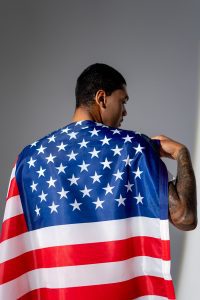 A hero can be thought of in many ways. It can be a character created in movies, that saves the day; a person that shows incredible courage under difficult circumstances; or, as Meriam-Webster adds, a hero can also be “a person admired for achievements and noble qualities.”
A hero can be thought of in many ways. It can be a character created in movies, that saves the day; a person that shows incredible courage under difficult circumstances; or, as Meriam-Webster adds, a hero can also be “a person admired for achievements and noble qualities.”
It is not hard to look back in history and see the blood, sweat and tears that many gave for us to be where we are today. One did not have to sacrifice their life (though some did), but also the sacrifice of time, mental and physical energy to move society or people ahead. Though the passage of time may have unraveled controversies surrounding the legacy of some, we’re mentioning these historical heroes for the positive contributions they made in their day.
Princeton, one of the oldest towns in New Jersey, has been the birthplace, the passing through place, the forever in death place for many such people. And the minds and strong people that have lived in or spent time here are amongst some of the greatest contributors to our American life and the world over.
EARLY POLITICAL LEADERS

Princeton’s first settler came in 1683, but shortly after, in the early 1700s Richard Stockton gave land to his sons, which expanded its borders. Stockton, whose father founded The College of New Jersey (now Princeton University) was born, attended college and later died in Princeton. The home he built, Morven, became home to many NJ governors and is now a museum. He is one of several who is remembered for his role in creating the United States.
Stockton suffered for his efforts, being imprisoned and starved by the British for signing the Declaration of Independence, the first to do so. He was a practicing lawyer and appointed Chief Justice of the New Jersey Supreme Court who got involved in the revolutionary fight for freedom from the British. But he was not the only Princetonian who helped seek America’s independence. He was instrumental in bringing John Witherspoon to the United States to become head of the college, which led to his important roles in the founding of the country.
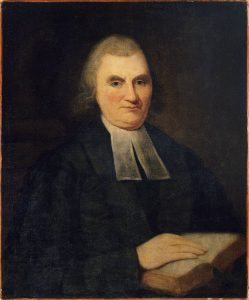 Witherspoon, a Scottish-born Presbyterian clergyman, was the only clergy or college president to sign the Declaration of Independence. He is credited with transforming the college, both financially and academically. Buried alongside other Presidents at Princeton Cemetery, Witherspoon was commemorated for years with his name on the middle school in town. His name was removed in 2020, due to controversy surrounding his connection to slavery.
Witherspoon, a Scottish-born Presbyterian clergyman, was the only clergy or college president to sign the Declaration of Independence. He is credited with transforming the college, both financially and academically. Buried alongside other Presidents at Princeton Cemetery, Witherspoon was commemorated for years with his name on the middle school in town. His name was removed in 2020, due to controversy surrounding his connection to slavery.
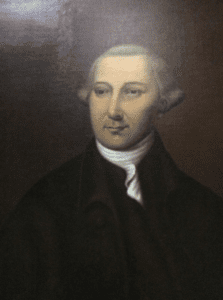 Joseph Hewes, not as famous as some of the other signers of the Declaration of Independence, was also born in Princeton. He became a merchant, an expert in shipping and soon applied his maritime knowledge to help the cause and oversaw the creation of the first naval warships.
Joseph Hewes, not as famous as some of the other signers of the Declaration of Independence, was also born in Princeton. He became a merchant, an expert in shipping and soon applied his maritime knowledge to help the cause and oversaw the creation of the first naval warships.
While those who were the early leaders in American government are known and therefore easily remembered, when we think of historical heroes there are others whose contributions during the Revolution must also be acknowledged.
“The well-known heroes of the past represent the very tip of the iceberg of heroic people who contributed to the success of our country. While Richard Stockton, John Witherspoon, Governor William Livingston, and other political leaders who lived or spent time in Princeton during the war are well-known, many non-political people of Princeton at that time also qualify as heroes,” explains William (Larry) Kidder, history teacher and author. “They served in the militia and the Continental Army, and a number helped the military supply departments maintain Washington’s army that spent most of the war in New Jersey. These ordinary people of Princeton played a variety of important roles while their lives were touched by the Revolution every day, often in very devastating ways. They included a number of enslaved people who found ways to achieve freedom for themselves or others and earned high respect for their ability and courage. Without all these people, the critical ideas promoted by the famous political heroes would be lost.”
 Though names may not all be written in our history books, their heroic contributions are being recognized. In his book, Revolutionary Princeton, Kidder shares their stories. Thomas Clarke, for example, who lived with his sister in their home at the back of what became Princeton Battlefield, was a Quaker farmer who woke one day to find his life forever changed as his home turned into a hospital to help the wounded from the Battle of Princeton.
Though names may not all be written in our history books, their heroic contributions are being recognized. In his book, Revolutionary Princeton, Kidder shares their stories. Thomas Clarke, for example, who lived with his sister in their home at the back of what became Princeton Battlefield, was a Quaker farmer who woke one day to find his life forever changed as his home turned into a hospital to help the wounded from the Battle of Princeton.
LEADERS OF THE NEW AMERICA
With the forming of the United States came people who rose to high levels of its leadership, three of which have a major Princeton connection. Thanks to the success of Hamilton on Broadway, it’s hard to think of the Revolution without recalling the role of Aaron Burr (and the famous duel in which he killed Alexander Hamilton).
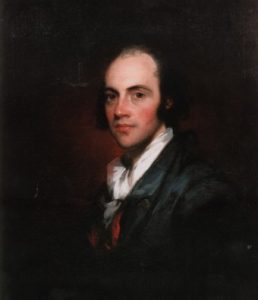 His father, Aaron Burr, Sr., was the second President of The College of New Jersey where junior would later find himself a student of theology. He went on to study law, and after the Revolution, that helped him rise through the ranks. He ultimately became a U.S. Senator and made two attempts to win the Presidency. In his second try, in 1800, he tied with Thomas Jefferson in electoral votes but, in deciding the tie, the House of Representatives chose Jefferson as President and Burr as Vice President. Burr is buried at Princeton Cemetery.
His father, Aaron Burr, Sr., was the second President of The College of New Jersey where junior would later find himself a student of theology. He went on to study law, and after the Revolution, that helped him rise through the ranks. He ultimately became a U.S. Senator and made two attempts to win the Presidency. In his second try, in 1800, he tied with Thomas Jefferson in electoral votes but, in deciding the tie, the House of Representatives chose Jefferson as President and Burr as Vice President. Burr is buried at Princeton Cemetery.
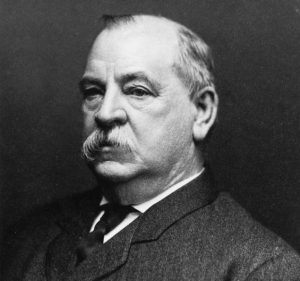
Also buried there is Grover Cleveland, the 22nd and 24th President of the United States, known best for utilizing his executive power to control wasteful legislative measures. To date, he remains the only President to serve two non-consecutive terms, as well as the only President married in the White House. After his final term, he spent his retirement years at his home on Hodge Road in Princeton where he later died.
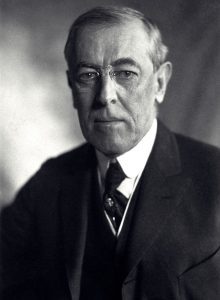 Several years later, Woodrow Wilson would lead the United States into World War I as the 28th President of the United States. His tenure saw major advancements, with the passage of the Nineteenth Amendment giving women the right to vote, and as a supporter of the League of Nations, for which he won a Nobel Peace Prize in 1919. A graduate of what is now Princeton University (PU), he later returned to become faculty and then its President. He was seen as a great leader in many ways, but in 2020 an evaluation of Wilson’s segregation policies caused Princeton University to remove his name from its School of Public and International Affairs and Wilson College.
Several years later, Woodrow Wilson would lead the United States into World War I as the 28th President of the United States. His tenure saw major advancements, with the passage of the Nineteenth Amendment giving women the right to vote, and as a supporter of the League of Nations, for which he won a Nobel Peace Prize in 1919. A graduate of what is now Princeton University (PU), he later returned to become faculty and then its President. He was seen as a great leader in many ways, but in 2020 an evaluation of Wilson’s segregation policies caused Princeton University to remove his name from its School of Public and International Affairs and Wilson College.
AMBASSADORS FOR CHANGE
To be a heroic leader, one didn’t have to be in political power. Several people from Princeton can be credited with standing up for what they believed and changing the course of the future for those to come.
“Our Center’s namesake, Bayard Rustin—a gay black man intentionally excised from the historical record of the Civil Rights Movement—reminds us of how essential it is for our social movements to lift up the vital contributions of individual activists without whom societal change would have remained impossible,” shares Alia Shinbrough, Minister for Queer Liberation at the Bayard Rustin Center for Social Justice, a community activist center in Princeton which advocates for marginalized or underserved people. “The history of social activism is not just some far-off events that happened to some very special people; history is so often made locally—by ordinary people with extraordinary courage—and it’s our collective responsibility to learn from these stories to guide our work today to co-create better futures with more justice and full inclusion for our interwoven communities.”
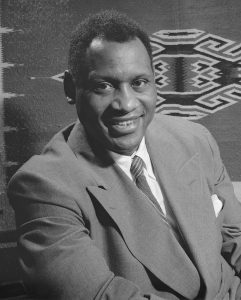
One such ordinary person with extraordinary talents and courage was Paul Robeson. You might recognize his name today because you drive down his namesake street across town, but do you know why a street has been named for him? It’s because the Princeton-born, extremely talented musician, actor, athlete and lawyer broke racial barriers and became a political activist who fought for civil rights. Investigated under McCarthy for his unwavering criticism of American policies, his career was sidelined for many years, but he will forever be remembered with buildings, plaques, an historical landmark and more marking his contributions both artistically and as a Black leader.
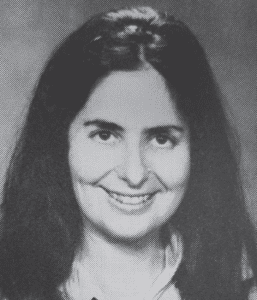
Having the courage to speak up and stand up, like Robeson did, is heroic in many ways because you are fighting a constant battle for a cause not everyone believes in. Nadine Taub did just this back in the 1970s, when the Princeton-born Rutgers law professor focused on women’s rights in a way no one had before her. Taub created the Women’s Rights Law Reporter and started Rutgers’ Women’s Rights Litigation Clinic, both the first of their kind focused on women’s legal rights.
Me too, you say? To most, this movement became universally known in 2017, but in reality, it was started decades ago when Taub won the first sexual harassment case in the United States in 1977, by proving in court that the Civil Rights Act of 1964 was violated by the act of a boss’ sexual harassment of her client. Taub passed away just two years ago.
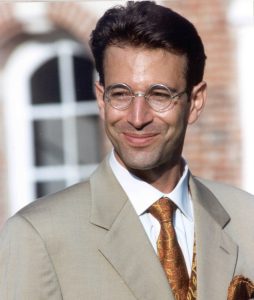
Also laid to rest before his time was Daniel Pearl, The Wall Street Journal reporter who was brutally murdered in 2002 after going missing in Pakistan. Accused of being a spy by his kidnappers, Pearl was a journalist who sought to uncover details about alleged terrorists such as “shoe-bomber” Richard Reid and possibly 9/11 mastermind Khalid Sheikh Mohammed. Also born in Princeton, Pearl spent his final years as the paper’s South Asia Bureau Chief living in Bombay. Upon his death many have continued to pursue his desire for cultural understanding.
INVENTORS AND VISIONARIES
Though they often don’t encounter the danger of those cited above, inventors and visionaries must be recognized for their heroic works that forever changed the way we see and do things. Like anyone who creates or discovers something new, there are trials, tribulations, naysayers and failures to overcome.
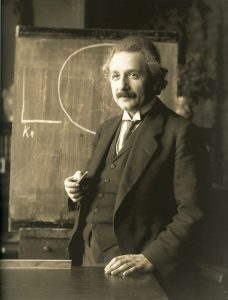 Most well-known for his time living in Princeton is one of the most famous scientists in the world, Albert Einstein. You know, the Theory of Relativity, E=mc2 and Pi? Einstein first came to Princeton to join Institute for Advanced Study (IAS), but also contributed his thoughts at Princeton University. He lived here until his final days when he passed away at Princeton hospital, though the home he lived is still standing on Mercer Road. He left behind contributions in scientific and mathematical theories and ideas that would be used to this day. His Nobel Prize in Physics in 1921 was an indicator of his gifts.
Most well-known for his time living in Princeton is one of the most famous scientists in the world, Albert Einstein. You know, the Theory of Relativity, E=mc2 and Pi? Einstein first came to Princeton to join Institute for Advanced Study (IAS), but also contributed his thoughts at Princeton University. He lived here until his final days when he passed away at Princeton hospital, though the home he lived is still standing on Mercer Road. He left behind contributions in scientific and mathematical theories and ideas that would be used to this day. His Nobel Prize in Physics in 1921 was an indicator of his gifts.
Einstein is one of many that lived in Princeton and earned high-level accolades for his advancements and contributions. Located in town, IAS is a gathering place for some of the world’s greatest thinkers and calls 35 Nobel Laureates, 44 of the 62 Fields Medalists, and 22 of the 25 Abel Prize Laureates amongst its faculty and members.
“The Institute’s home in Princeton, NJ was strategically chosen by founding Director Abraham Flexner, who realized the value of convening great minds and removing barriers to collaboration. From its establishment in 1930, IAS has cultivated, with Princeton University, a lasting dialogue and countless research endeavors among scholars that have propelled human knowledge in both the sciences and humanities,” details Lee Sandberg, IAS Communications and Public Relations Manager. “Dedicated to the pursuit of fundamental knowledge, IAS research has resulted in various applications that impact our daily lives, from the digital architecture of smartphones to weather forecasting. But perhaps the greatest contribution of IAS remains its ability to accelerate research and the many possibilities that await.”
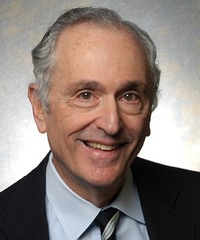
One such contributor to the sciences was John Bahcall, on the faculty of IAS for 34 years and visiting professor at PU. The National Medal of Science winner was an astrophysicist that changed the way people view the universe through his design and advocating for the Hubble Space Telescope. He also was instrumental in gaining an understanding of how the sun works. His time living in Princeton made significant contributions for future explorers and scientists to utilize.
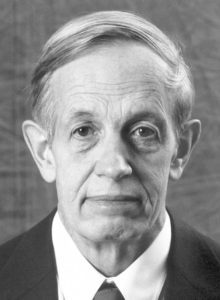
PU also draws other great thought leaders to the town. The famous mathematician John Nash, who gained wide popularity after the release of the movie A Beautiful Mind, first came to PU as a doctoral student. He later returned as a senior research mathematician and won the Nobel Prize in Economics in 1994 and the Abel Prize in 2015. In all, it appears that 50 Nobel laureates, 13 Field medalists and 10 Abel prize laureates were members of the PU faculty or staff. In addition, 20 Nobel laureates, four Fields medalists and five Abel prize laurates cite a degree from Princeton but won later in life.
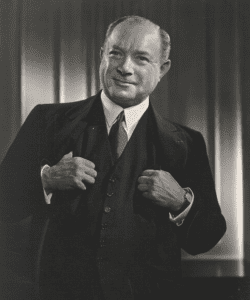
Beyond academics, the Princeton area has been home to other great scientific advancements. There are many who contributed to the invention of color television, but it is believed that David Sarnoff was responsible for bringing together the scientists at Radio Corporation of America (RCA, which later became Sarnoff Corporation) who were responsible for introducing the first electronic monochrome television system in 1939 and later the world’s first electronic color television system in 1946. The Liquid Crystal Display (LCD) was also created there in the 1960s, still used in a broad array of technology from phones to watches and of course, TVs. These advances all took place on the campus that sits in West Windsor (with a Princeton address) just across Route 1 at what is now SRI International.
As Meriam-Webster states “a person admired for achievements and noble qualities” is a hero, and therefore these men and women must be admired for their heroic efforts, many of which created the world we know today and majorly contributed to the knowledge, understanding and advancements we’ve come to have.
The capital of the United States for a short time, Princeton proved its importance in the United States. Then and ever since, the historical heroes mentioned here and the many others that contributed to society, continue the impress us with their strength, genius and foresight. We are all better off for them having lived here, even if for a short time.
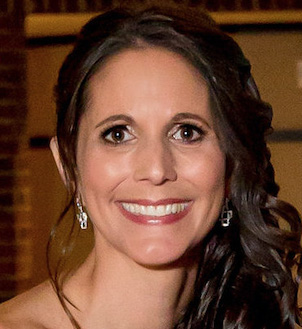
Lisa Jacknow spent years working in national and local news in and around New York City before moving to Princeton. Working as both a TV producer and news reporter, Lisa came to this area to focus on the local news of Mercer County at WZBN-TV. In recent years, she got immersed in the Princeton community by serving leadership roles at local schools in addition to volunteering for other local non-profits. In her free time, Lisa loves to spend time with her family, play tennis, sing and play the piano. A graduate of the S. I. Newhouse School of Public Communications at Syracuse University, Lisa was raised just north of Boston, Massachusetts but has lived in the tri-state area since college. She is excited to be Editor and head writer for Princeton Perspectives!
